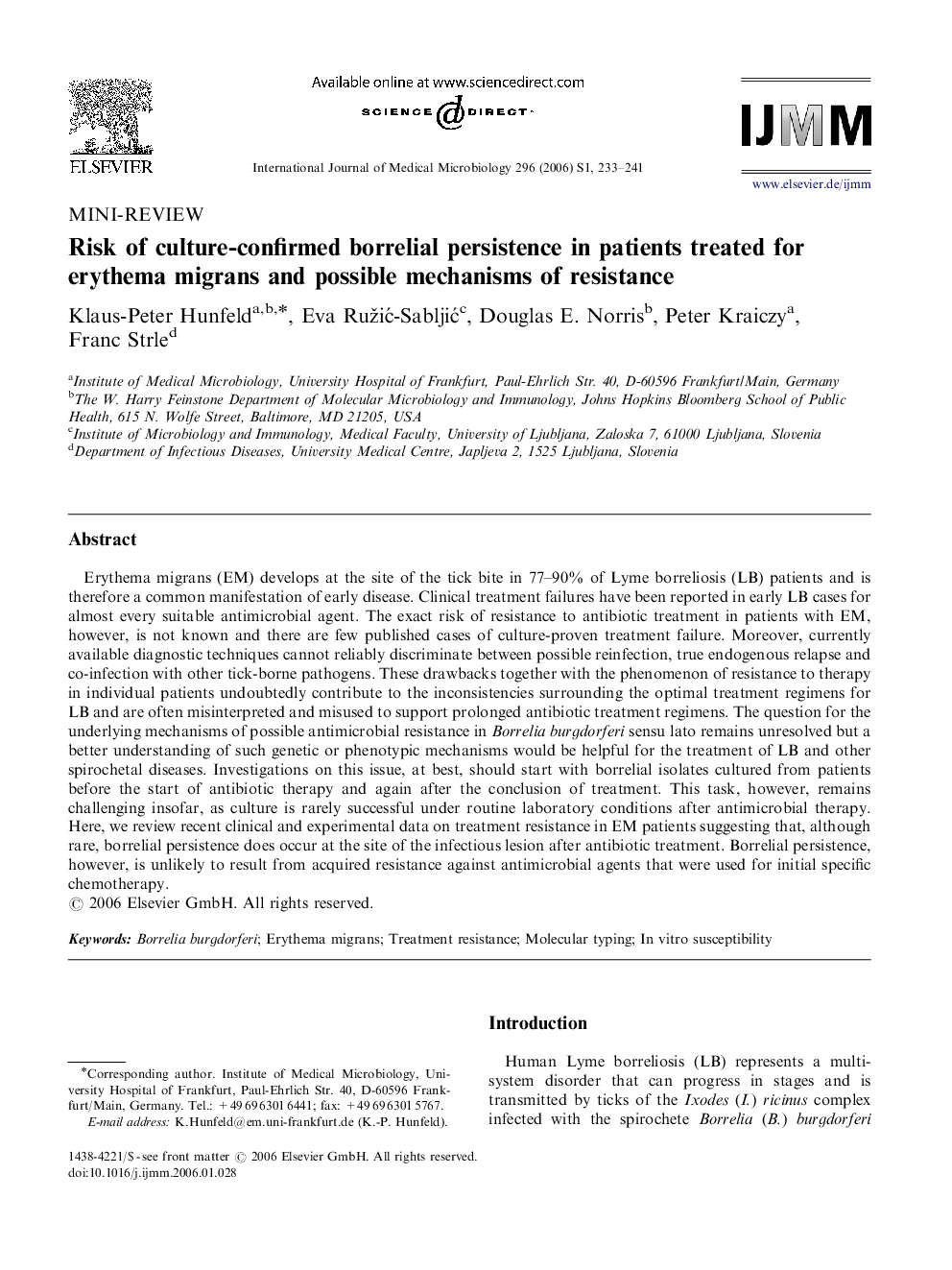| Article ID | Journal | Published Year | Pages | File Type |
|---|---|---|---|---|
| 2055104 | International Journal of Medical Microbiology | 2006 | 9 Pages |
Erythema migrans (EM) develops at the site of the tick bite in 77–90% of Lyme borreliosis (LB) patients and is therefore a common manifestation of early disease. Clinical treatment failures have been reported in early LB cases for almost every suitable antimicrobial agent. The exact risk of resistance to antibiotic treatment in patients with EM, however, is not known and there are few published cases of culture-proven treatment failure. Moreover, currently available diagnostic techniques cannot reliably discriminate between possible reinfection, true endogenous relapse and co-infection with other tick-borne pathogens. These drawbacks together with the phenomenon of resistance to therapy in individual patients undoubtedly contribute to the inconsistencies surrounding the optimal treatment regimens for LB and are often misinterpreted and misused to support prolonged antibiotic treatment regimens. The question for the underlying mechanisms of possible antimicrobial resistance in Borrelia burgdorferi sensu lato remains unresolved but a better understanding of such genetic or phenotypic mechanisms would be helpful for the treatment of LB and other spirochetal diseases. Investigations on this issue, at best, should start with borrelial isolates cultured from patients before the start of antibiotic therapy and again after the conclusion of treatment. This task, however, remains challenging insofar, as culture is rarely successful under routine laboratory conditions after antimicrobial therapy. Here, we review recent clinical and experimental data on treatment resistance in EM patients suggesting that, although rare, borrelial persistence does occur at the site of the infectious lesion after antibiotic treatment. Borrelial persistence, however, is unlikely to result from acquired resistance against antimicrobial agents that were used for initial specific chemotherapy.
